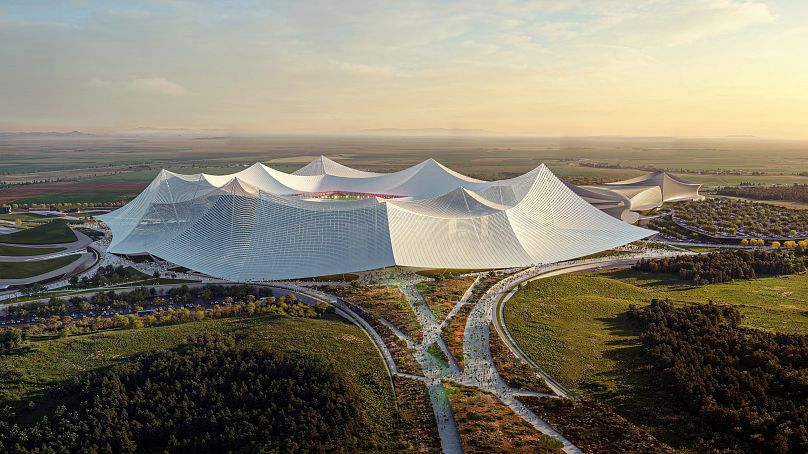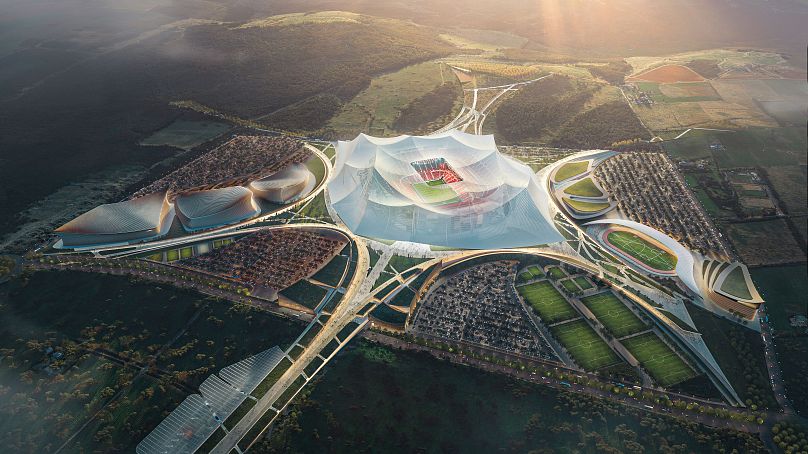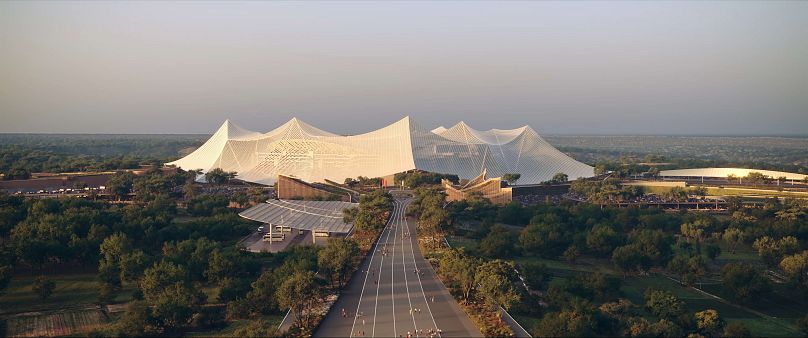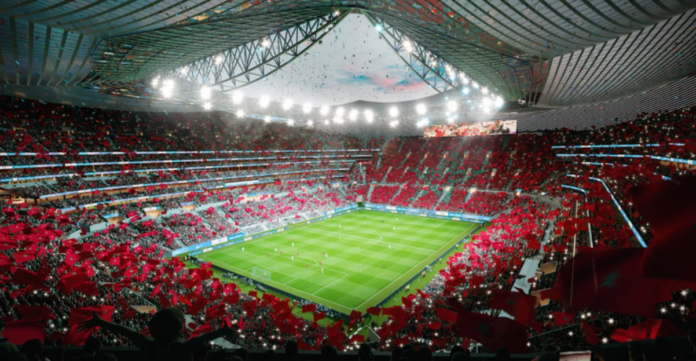The Grand Stade Hassan II in Casablanca, Morocco, is projected to be the world’s largest football stadium, with a 115,000-seat capacity – just in time for the African nation to joint-host the 2030 FIFA World Cup.
Morocco will stage the tournament alongside Portugal and Spain, with the Casablanca location already designated for the final. Preparations for the groundworks of the stadium began in October 2023 on the 100-hectare site.
The current record holder for the largest football stadium is the Rungrado 1st of May Stadium in Pyongyang, North Korea, which has a capacity of 114,000 people and hosts its national football team.

The stadium is 10 km from Casablanca Oualalou + Choi and Populous
The stadium has been designed by Paris-based architects Oualalou + Choi and global sports design leaders, Populous.
It won’t be the biggest overall venue in the world though. That honour goes to the Narendra Modi Stadium in Ahmedabad, India. The cricket stadium doesn’t hold football games but can host up to 132,000 spectators.

Concept art Oualalou + Choi and Populous
Inspired by the traditional Moroccan societal gathering called a “moussem” where Moroccan groups come together for cultural exchanges, the roof’s structure is designed to look like a grand tent among the Cassablancan forested landscape.

External view Oualalou + Choi and Populous
Surrounding the main stadium are groups of gardens housing smaller sports pitches and complexes. This “oasis of greenery” includes botanical gardens to add a new level of interaction between the stadium and the surrounding nature in its location, 38 km north of Casablanca.
Each end of the stadium has a stand that can hold 29,500 general admission spectators, with a further 12,000 spectators admissible in the five tiers of VIP hospitality stands.

Pitches and botanical gardens Oualalou + Choi and Populous
Tarik Oualalou, Design Principal and founding partner at Oualalou + Choi and Lead Architect for the project, comments: “The Grand Stade Hassan II is deeply rooted in Moroccan culture, with its traditions and contemporary expressions. It is rooted in ancient and primordial figures: the Moussem, the tent, and the garden, as well as the topography and landscapes of Morocco. It’s a generous space, open to the world and respectful to the Nature it protects. The Grand Stade Hassan II de Casablanca is the embodiment of the great tradition of Moroccan hospitality.”

